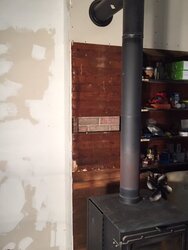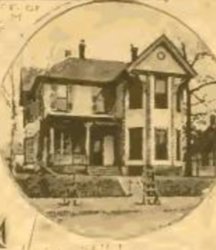I have an old house with shiplap walls. Some of the chimneys are encased in shiplap or tongue in groove boards. I am installing sheetrock over the wood. The stovepipe enters the chimney through a hole in the sheetrock and the wood. In the picture you can see where I removed some of the tongue in groove to show the chimney behind it. What is the proper way to install a stovepipe in this situation?
Stovepipe through shiplap
- Thread starter ChrisB
- Start date
-
Active since 1995, Hearth.com is THE place on the internet for free information and advice about wood stoves, pellet stoves and other energy saving equipment.
We strive to provide opinions, articles, discussions and history related to Hearth Products and in a more general sense, energy issues.
We promote the EFFICIENT, RESPONSIBLE, CLEAN and SAFE use of all fuels, whether renewable or fossil.



